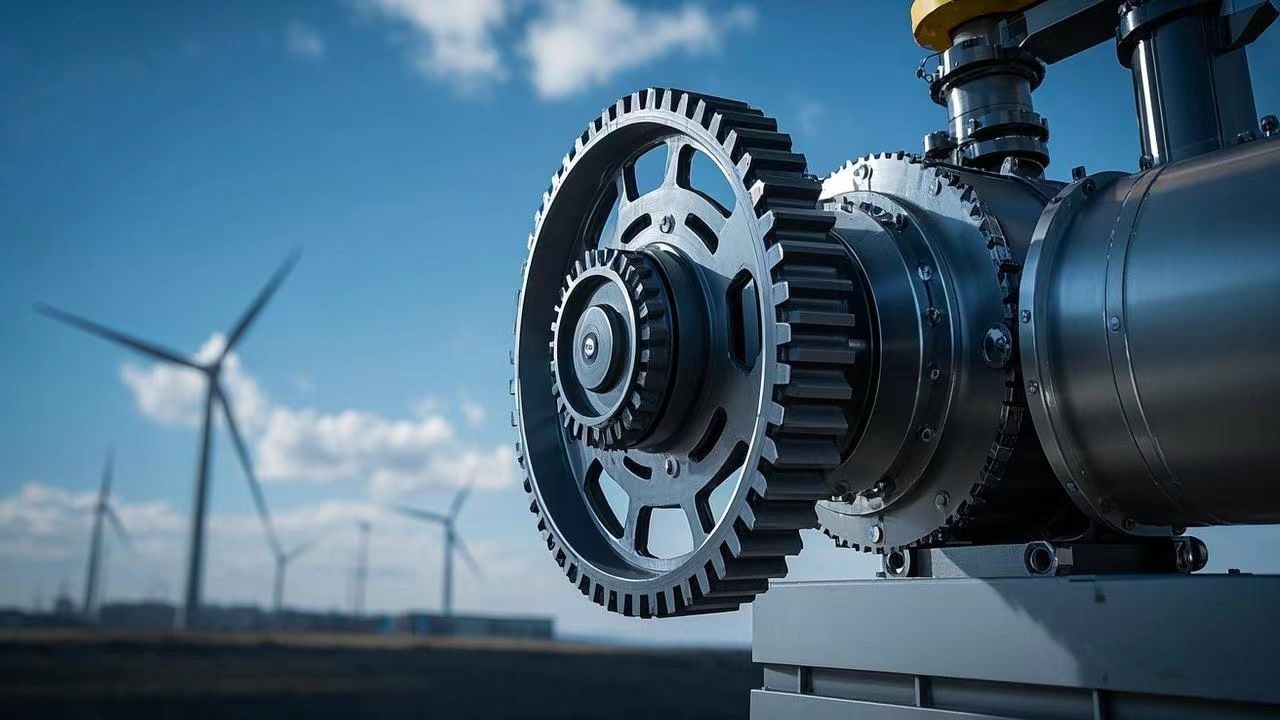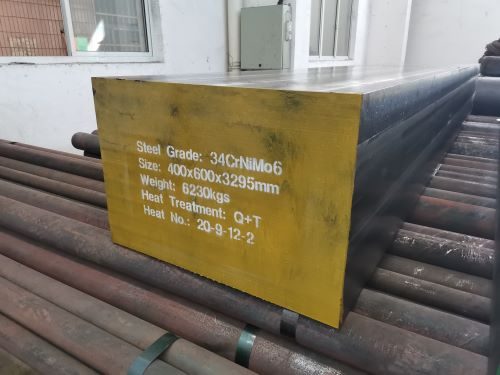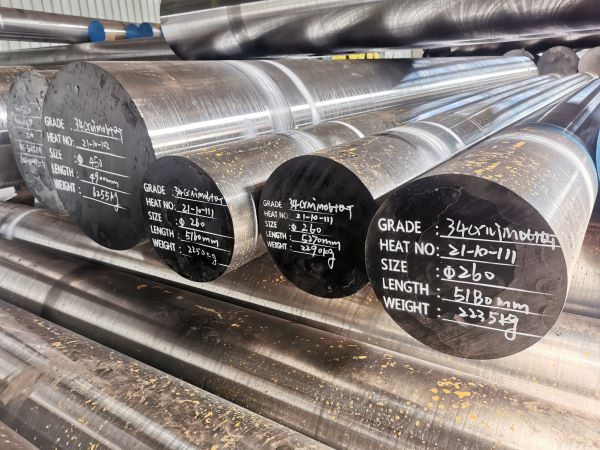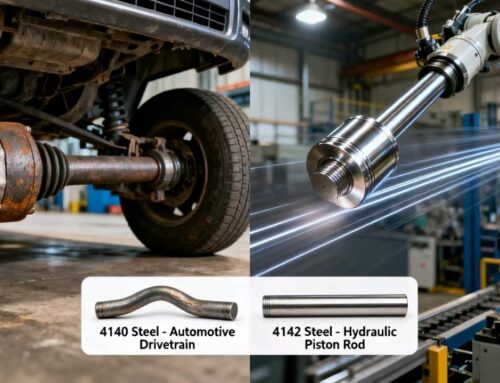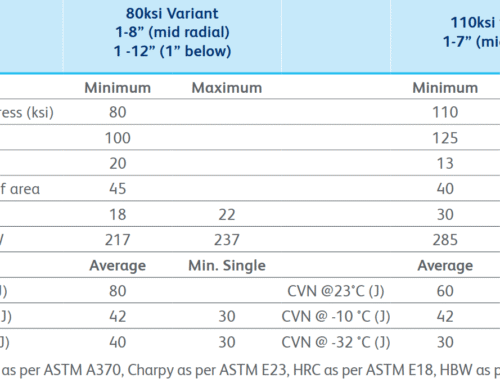The wind power industry is growing at a high rate of 15% per year, but the high failure rate and short life cycle of wind turbine gearboxes have always been the pain points of the industry. Why have giants such as Vestas and Siemens Gamesa turned to 34CrNiMo6 steel? This article will deeply analyze the five irreplaceable advantages of this material in the field of wind power, and use data and cases to reveal the technical logic behind it.
1. The “Hell-level” Challenge of Wind Power Equipment
In extreme environments such as offshore wind turbines and high-altitude wind farms, gearboxes need to withstand:
- Alternating loads: sudden changes in wind speed cause torque fluctuations of more than 300%;
- Low-temperature shock: risk of metal embrittlement at -40°C;
- Salt spray corrosion: the life of offshore wind turbine components is shortened by more than 50%.
Industry status: In 2023, the global wind power operation and maintenance cost will exceed US$27 billion, of which gearbox failures account for 35%, and material upgrades have become the key to breaking the deadlock.
2. Five Core Advantages of 34CrNiMo6 Steel
Advantage 1: Fatigue resistance is improved by 200%, breaking the curse of alternating loads
- Data comparison:
| Material | Fatigue limit (MPa) | Number of cycles (10^7) |
| 34CrNiMo6 | 580 | ≥5 |
| Traditional 42CrMo4 | 450 | 2-3 |
- Technical principle: Nickel (Ni) element inhibits crack initiation, and molybdenum (Mo) refines grain boundaries and blocks crack propagation.
- Case: After a 5MW offshore wind turbine gearbox uses 34CrNiMo6, the design life is extended from 15 years to 25 years.
Advantage 2: -40°C low-temperature impact toughness, conquering extremely cold wind farms
- In the -40°C test, the impact energy of 34CrNiMo6 still reached 54J (far exceeding the 27J required by the EN standard).
- The solid solution strengthening effect of nickel significantly reduces the risk of low-temperature brittle fracture.
- Application scenario: Nordic wind power projects require gear materials to pass -50°C impact certification.
Advantage 3: Hardenability depth of 150mm, solving the “core soft rib” of large gears
After oil quenching, the wind power gear with a diameter of 3 meters:
– Surface hardness: 55 HRC
– Core hardness: 52 HRC (fluctuation ≤3 HRC)
Traditional material defects: The core hardness of 42CrMo4 drops sharply to 45 HRC, becoming the source of stress concentration.
Value embodiment: Avoid tooth root fracture accidents and reduce the cost of gearbox replacement by US$1 million per time.
Advantage 4: Upgraded corrosion resistance, doubled life of offshore wind turbines
In the salt spray test (ASTM B117):
| Material | Rust appearance time | Annual corrosion rate (mm/a) |
| 34CrNiMo6 | 1200 hours | 0.002 |
| S355NL | 200 hours | 0.015 |
Chromium (1.7%) forms a dense oxide film to resist chloride ion corrosion.
Advantage 5: 40% reduction in life cycle cost
Cost comparison model (taking 10MW wind turbine as an example):
| Cost item | 34CrNiMo6 solution | Traditional solution |
| Relative initial material cost | x1.5 | x1.0 |
| Relative 20-year operation and maintenance cost | x0.2 | x1.0 |
| Relative total cost | x0.475 | x1.0 |
Return on investment: The material price difference can be recovered within 3 years by using 34CrNiMo6 gearbox.
3. Actual Combat Cases of Giants: Vestas’s Choice
- Challenge: The average failure cycle of gearboxes in the Scottish North Sea wind farm is only 5 years.
- Solution: The gear ring is fully switched to 34CrNiMo6, combined with nitriding treatment (surface hardness 70 HRC).
- Results:
– The failure rate dropped by 72%;
– The annual power generation of a single wind turbine increased by 9%;
– The project IRR (internal rate of return) jumped from 8% to 14%.
4. Why is It Difficult For Alternative Materials to Shake Its Position?
| Comparison items | 34CrNiMo6 | 42CrMo4 | 4340 |
| Fatigue resistance | ★★★★★ | ★★★☆☆ | ★★★★☆ |
| Low temperature toughness | ★★★★★ | ★★☆☆☆ | ★★★★☆ |
| Hardenability depth | 150mm | 80mm | 120mm |
| Salt spray corrosion life | 25 years | 8-10 years | 15 years |
Conclusion: 34CrNiMo6 crushes competitors in terms of performance balance, especially in extreme working conditions.
5. Future Trends: Will 34CrNiMo6 Become The Standard For Wind Power?
- Policy-driven: The new EU regulations require that the life of offshore wind turbines be ≥ 30 years before 2030, forcing material upgrades.
- Technology iteration: The combination of 34CrNiMo6+laser additive manufacturing is testing 20-meter-class integrated gears.
- Domestic substitution: Domestic steel mills have launched 34CrNiMo6 that meets EN standards, and the price is 25% lower than imported ones.
Summary
From fatigue resistance to corrosion resistance, from extreme cold adaptation to cost optimization, 34CrNiMo6 has become the “invisible guardian” of wind power giants with the attitude of an excellent student in all subjects of engineering. With the large-scale development of wind turbines and the deepening of sea area development, the strategic value of this material will continue to rise.
